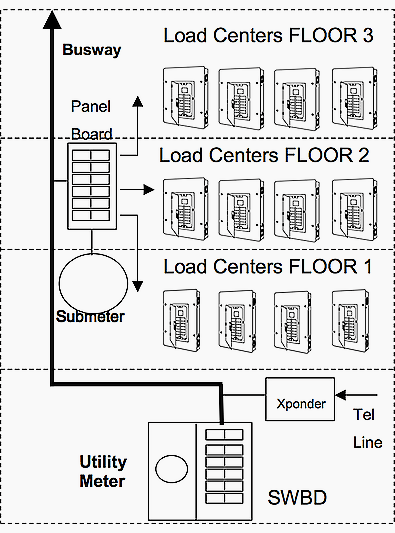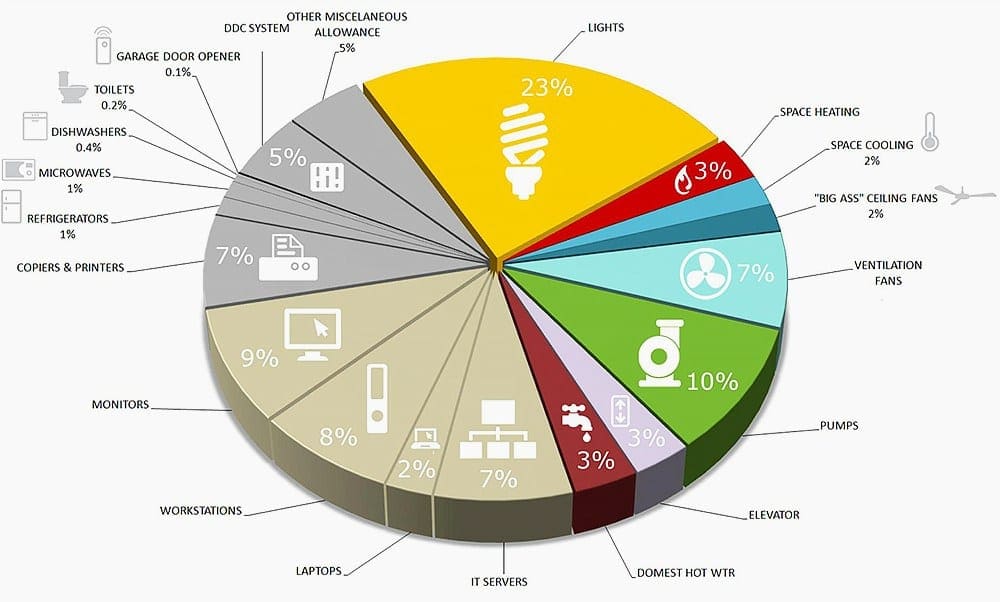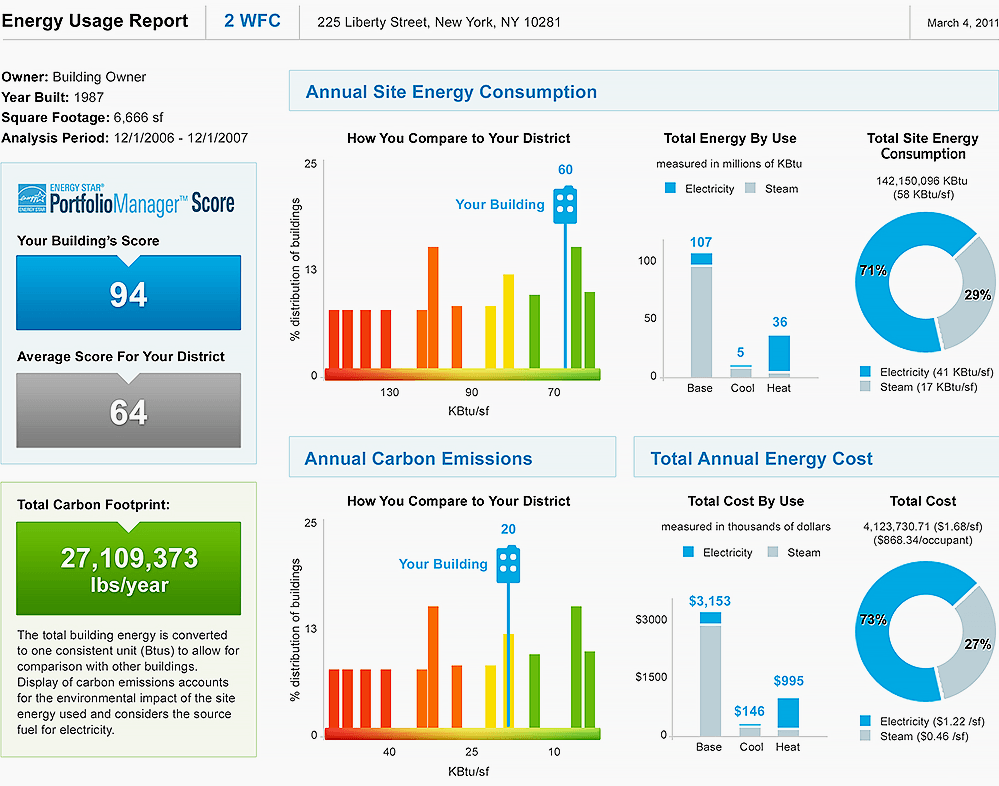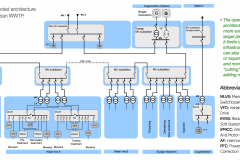Greater energy metering and efficiency
The first step to greater efficiency through energy metering and monitoring is to set objectives for the future system. Ideally, users of the system are involved in this process, and are given an opportunity to provide input on the main features to be included in the system.

This step is essential to identifying user needs and determining the scope of the future energy monitoring system!
The main applications of an energy monitoring system are //
- Energy cost allocation
- Energy sub-billing
- Energy usage analysis
- Building energy performance benchmarking
- Electrical distribution asset management
- Bill auditing (shadow metering)
- Energy procurement
- Demand/response
These high-level objectives must be customised to meet the unique needs of each energy monitoring project.
1. Energy cost allocation
For buildings where cost allocation is used, energy costs are commonly allocated using a formula based on the floor area occupied by each tenant relative to the total floor area of the building. However, many tenants are beginning to consider this type of cost allocation inaccurate and unfair and are asking to be billed only for their actual usage.
Also, the typical lack of resolution in the data (i.e., one monthly kWh reading) provides no insight into the opportunities that may be available to better manage costs, and allocation of coincident demand costs is not possible. And yet reliable, accurate cost allocation is a competitive requirement and, in some cases, the de facto standard.
Cost allocation // By measuring the energy consumed at different points on the network, users gain an opportunity to take ownership of their energy costs at the appropriate level in an organisation. This helps drive behavioural changes and lower costs.


2. Energy sub-billing
For buildings that have no sub-metering system in place at all, energy and demand costs are often not passed on to tenants. Property owners that want to recover the costs of supplying electricity to individual tenants may encounter a number of obstacles to implementing tenant sub-billing.
Sub-billing // Accurate measurement at the energy delivery point enables multi tenant building operators to assess each tenant’s exact consumption. This encourages accountability and more energy efficient habits among tenants while generating revenue for building owners.


3. Energy usage analysis
For businesses, energy is a major operating cost. To extract maximum financial and competitive advantage from energy, users need to go beyond the traditional tactical approach of simply replacing inefficient equipment. Energy usage analysis provides users with the means to maximise energy efficiency and minimise energy-related costs.


4. Building energy performance benchmarking
Benchmarking allows users to compare the energy efficiency of one building or application (HVAC, lighting, IT) in an office building against others, or against real estate market statistics.
Benchmarking can reveal inefficiencies and isolate key contributing factors, helping to identify the right places to target improvement projects that won’t have a negative impact on business or users. Such improvements include equipment upgrades, process changes, and optimising building performance according to weather conditions, occupancy, or other factors.


5. Electrical distribution asset management
Constant monitoring of the installation gives facility and property managers the information they need to improve usage and behaviour, lower electrical consumption, reduce capital expenditures, and cut energy costs. An electrical distribution asset management system accurately meters energy consumption and demand throughout each facility and automatically generates load profiles that provide insight into historical and present load patterns.
The data gathered can reveal hidden, unused capacity for each building, floor, feeder, area, or piece of equipment. This spare capacity can then be better leveraged without the need for additional capital expenditures on upgrades.
It can also reassure building operators that the existing infrastructure will be able to handle uctuations in building occupancy – and thus demand – again, minimising capital expenditures.
6. Bill auditing (shadow metering)
WAGES (water, air, gas, electricity, steam) billing errors are surprisingly common. Because most supply contracts allow the utility to recover missed charges only months or years after an error has occurred, under-billing can be as problematic as errors in the utility’s favour. For a commercial building, this lengthy error identification and recovery process potentially means that costs will not be recouped from tenants if a new tenant moves into the space before the issue is resolved.
Under- or over-billing can result from meter reading and data entry errors. A building could also be on the wrong tariff, or on a billing interval that is too long or too short, which can skew demand charges.
Therefore, it is to the property manager’s advantage to audit all utility bills received to identify any errors and/or anomalies and to have the information necessary to support any cost recovery claims.
Software then reads the energy data picked up by the shadow meter and calculates an accurate shadow bill that can include all expected energy and demand charges. This bill can then be compared to the utility’s bill to identify any inconsistencies. Bills can be verified either manually or by inputting the actual utility bill data into the software for comparison.


7. Energy procurement
Shadow billing and procurement are complementary applications. The level of benefits achievable through improved procurement strategies and better supply contracts are influenced by two factors:
- Typically, larger energy consumers are in a better position to negotiate, particularly if the aggregated consumption among multiple buildings can be leveraged with a single utility.
- Typically, enterprises in deregulated, competitive markets stand to benefit the most.
An energy procurement system can deliver detailed energy and load profile histories as well as reliability and power quality summaries for all properties. It also offers tools to analyse and evaluate tariff structures (including real-time pricing) from single or multiple energy providers, comparing options using “what-if” scenarios.
8. Demand/response
This feature offers the consumer the ability to take advantage of discounted electricity rates by reducing consumption on demand (on a case-by case or commitment basis). A demand / response system will first help the user to assess whether participation in a specific event is economically advantageous.
If it is, the system will help quickly determine where and how much load can be reduced in response to the curtailment request.
Finally, demand/response systems can help consumers efficiently coordinate a load curtailment strategy by automatically shedding loads or starting up generators during the event period.
Reference // Designing energy metering system for small and medium-sized buildings by Schneider Electric











Good day what is the cost involved.
I have client that has a 3phase prepaid meter.He has 4 tenants staying on the property. He want to know the amount of power they consume a month and bill them accordingly.
Please advise on what product to make use of to sort out the reqest .
Regards
Christo Mostert.
It’s rather interesting for beginners.
If you placed “shadow meter” as shown on picture, almost everybody can “cracked” it.
So this scheme only for trustworthy people.
Do you have something interesting for professional guys?
What is the sotware name??